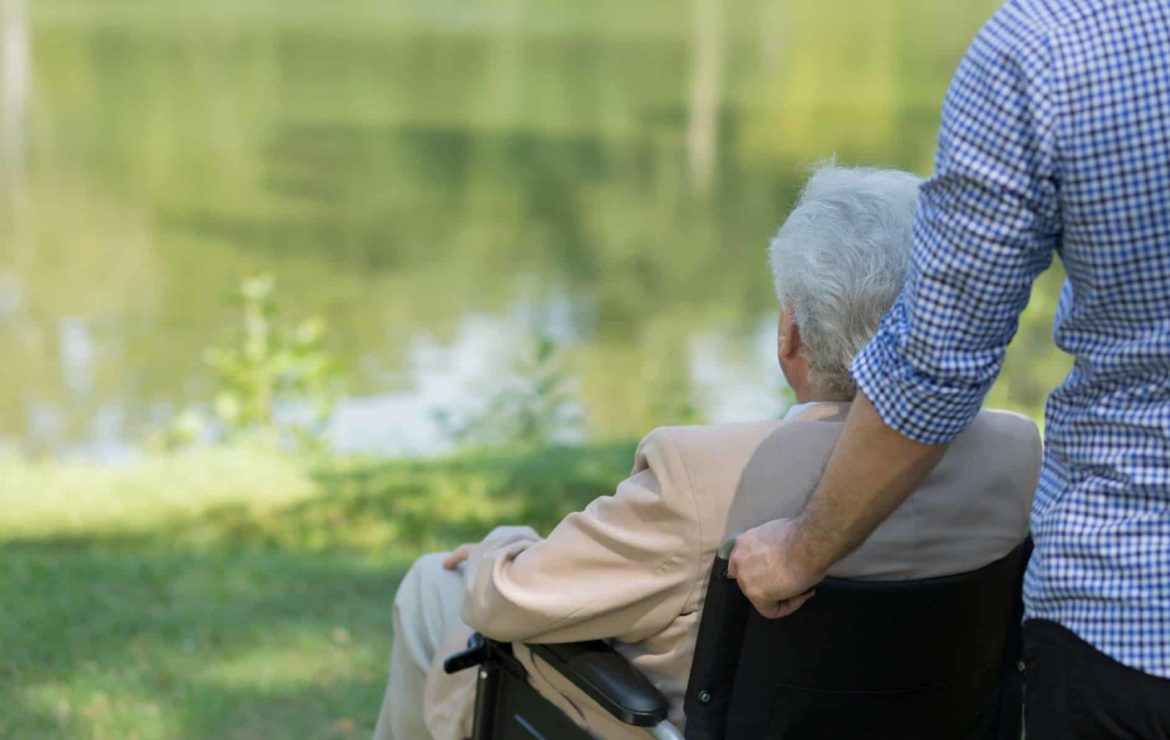End Of Life Care: Everything You Need to Know

When our loved ones age, their care needs tend to grow. If it becomes difficult to manage these needs at home, a natural next step is contacting an assisted living or memory care home. These facilities give seniors a comfortable atmosphere where they can relax, form new friendships and receive medical assistance. As time progresses, some seniors may require end of life care options like palliative or hospice care. Senior living facilities, such as Cedar Creek Memory Care, provide end of life services so the older adult doesn’t have to transition to a new environment. Let’s take a closer look at how end of life care works, the difference between care services and how Cedar Creek Memory Care supports its residents.
What Is End of Life Care?
End of life care is a general term for the care given to someone nearing the end of their life span (typically due to serious illness or old age). It can be divided into two types:
- Palliative care
- Hospice care
The main difference between palliative and hospice care is that the former includes curative treatment. While hospice focuses largely on symptom relief, palliative care aims to cure the illness while also helping improve quality of life.
Care at End of Life
Care at the end of life stage varies depending on whether the patient needs palliative or hospice assistance. To decide, a healthcare professional will evaluate the following:
- Diagnosis: Hospice care is usually only recommended when a person’s life expectancy is six months or less. Palliative care, on the other hand, can begin on the first day of diagnosis.
- Extent of symptoms: If a patient is experiencing extremely painful symptoms or frequent hospitalizations, comfort care may take priority over curative treatment.
- Patient’s needs: Many physicians will consider the patient’s desires and whether they’re interested in undergoing medical care.
Whether a patient is receiving palliative or hospice care, they can expect a combination of pain relief and emotional support. Like hospice teams, palliative care teams help the family come to terms with their loved one’s serious illness. Although there’s a chance of recovery, palliative teams still make sure every family member is prepared for the potential loss of a loved one. They’ll also support a transition to hospice care if that becomes necessary.

What Is Hospice Care?
Hospice is a type of end of life care designed for terminally ill patients. Because there’s usually no chance of recovery, hospice care focuses on symptom relief as opposed to curative treatment. Ultimately, the purpose of hospice is to make the patient as comfortable as possible during their final months. Most patients begin hospice when they have a prognosis of six months or less.
Hospice Services
Now that you know what hospice care is, you might be wondering what it involves. While this varies depending on the patient, most hospice services cover physical, mental and spiritual needs. These demands are fulfilled by a team made up of the following:
- Physicians
- Vocational nurses
- Home health aides
- Social workers
- Spiritual coordinators
- Bereavement coordinators
In addition to symptom management, hospice patients receive emotional support. This also extends to their family members and any other loved ones. Overall, hospice care teams are more than just a medical team — they’re a support team that works hard to make sure everyone involved in the patient’s life feels at ease.
What Is Palliative Care?
Palliative care is available to patients with serious illnesses and aims to improve quality of life by managing symptoms, offering comfort and providing emotional support. While there are several similarities between palliative and hospice care, there are also some key differences. Here are some top factors to consider when choosing between them.
Palliative Care Is Curative
A major difference between palliative care vs. other end of life care options is that palliative care may include curative treatment. Most palliative care patients receive a combination of medical care and symptom relief, which is designed to increase comfort and help the patient overcome illness. Diseases that are often treated with palliative care include:
- Heart failure
- Cancer
- Dementia
- Parkinson’s disease
- Chronic obstructive pulmonary disease
If a patient has a terminal illness, or if they’re elderly and nearing the end of their life span, hospice care is usually the recommended option. Since there’s no chance of recovery, it focuses solely on making the patient’s remaining months as comfortable as possible through symptom management and supportive care.
Palliative Care Can Be Provided at Any Stage of Illness
Because it includes curative treatment, a patient may access palliative care at any stage of a serious illness — including the very first day of diagnosis. Meanwhile, hospice care is typically only available to individuals who have a prognosis of six months or less. However, health professionals may make exceptions in the following situations:
- The patient has an incurable illness and won’t benefit from extra time.
- The patient’s physical symptoms are overwhelming and painful.
- Both the patient and family members think end of life care is the best choice.
It’s also possible to undergo both services. Many patients transition from palliative to hospice care if they feel the former isn’t helping them.

What Are the Benefits of End of Life Care?
If you discover a loved one has a life-limiting illness, it’s important to start discussing end of life care with a health professional. While this isn’t an easy discussion, having it early helps ensure your loved one receives all the benefits end of life care has to offer, such as the following:
It Puts Patients First
A common complaint among patients who’ve been diagnosed with a terminal illness is that the disease takes over their life. End of life care puts the patient first, making sure they’re supported by relieving pain, reducing stress and increasing comfort.
It Supports Family Members
What sets end of life care apart from other types of care is the emphasis it puts on the patient’s family and loved ones. In addition to helping the patient navigate their life-limiting illness, it prepares the family by providing emotional assistance and grief counseling.
It Improves Well-Being
Because it focuses on improving quality of life, end of life care is known to enhance a patient’s overall well-being. After experiencing comfort care, many patients are happier mentally. Some may see improvement in their health conditions.
It Can Be Covered by Insurance
Many health care insurance policies (such as Medicare) will cover the cost of hospice care at assisted living facilities.
Where Can One Receive End of Life Care?
Whether your loved one is receiving palliative or hospice care, you want them to be as comfortable as possible. This means selecting a location where they’ll feel at ease and happy. In general, patients can choose one of three locations: at home, in a hospital or in a senior living community.
Home Care
For many patients, receiving care at home is the most comfortable option available. This allows patients to enjoy their personal items and remain close to their friends, family members and communities.
On the flip side, home care can be expensive as it requires installing medical equipment (which may require renovations). Moreover, patients will need to either hire a home health aide or have a family member check in on them regularly. In severe cases, a caregiver may need to remain in the home at all times.
Hospitals/Clinics
Many hospitals feature wings designed solely for end of life and palliative care patients. There are also clinics that cater to these groups. The main advantage of receiving care in a hospital is that patients don’t have to worry about their needs going unattended. Both staff members and medical equipment are readily accessible in cases of emergency.
On the downside, hospitals are not the coziest environments. The benefits are especially minimal if you’re receiving end of life care and don’t need any medical treatments.
Senior Living Home
A senior living home is a popular location for receiving care. It combines a cozy, home-like atmosphere with experienced caregivers, ultimately giving patients the best of both worlds. At Cedar Creek Memory Care, we offer end of life care that helps residents feel comfortable and supported.

Cedar Creek Memory Care: End of Life Care
Every older adult deserves peace and dignity in their final years. Our team at Cedar Creek Memory Care is highly experienced in delivering quality, personalized medical and comfort care to residents in need of end of life services. Thanks to our care, our residents can receive hospice services without having to uproot themselves and add further distress to their lives. We have communities in the following locations:
- Bethesda, Maryland
- Rockville, Maryland
- Silver Spring, Maryland
Each of our homes comes with a team of hard-working caregivers who are dedicated to providing the highest level of care and support available. If you have any questions about our services, don’t hesitate to call (301) 384-4017 or message us through our website today.




